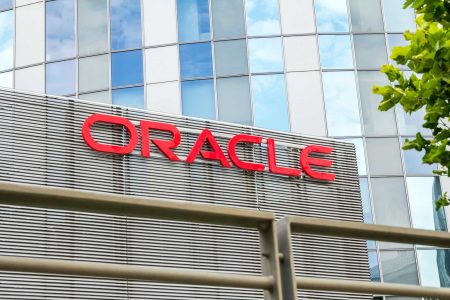Black Hills Corporation (NYSE:BKH) Q1 2024 Results Conference Call May 9, 2024 11:00 AM ET
Company Participants
Dave Soderquist – Investor Relations Manager
Linden Evans – President and CEO
Kimberly Nooney – SVP and CFO
Marne Jones – SVP, Utilities
Todd Jacobs – SVP, Growth and Strategy
Conference Call Participants
Andrew Weisel – Scotiabank
Brandon Lee – Mizuho
Operator
Good day, and thank you for standing by. Welcome to the Black Hills Corporation’s First Quarter 2024 Earnings Conference Call. At this time, all participants are in a listen-only mode. After the speakers’ presentation, there will be a question-and-answer session. [Operator Instructions]. Please be advised that today’s conference is being recorded.
I would now like to hand the conference over to your Dave Soderquist, Investor Relations Manager. Please go ahead.
Dave Soderquist
Thank you, Liz. Good morning everyone. Welcome to Black Hills Corporation’s first quarter 2024 earnings conference call. You can find our earnings release and materials for our call this morning at our website at www.blackhillscorp.com under the Investor Relations heading.
Leading our quarterly earnings discussion today are Linden Evans, President and Chief Executive Officer; and Kimberly Nooney, Senior Vice President and Chief Financial Officer. Also attending this morning are Marne Jones, Senior Vice President, Utilities; and Todd Jacobs, Senior Vice President, Growth and Strategy.
Before we begin today, we would like to note that Black Hills will be attending the American Gas Association Financial Forum the week of May 19th. Our leadership team will be meeting with investors at the conference and an investor presentation will be posted on our website prior to the event.
During our earnings discussion today, comments we make may contain forward-looking statements as defined by the Securities and Exchange Commission, and there are a number of uncertainties inherent in such comments. Although, we believe that our expectations are based on reasonable assumptions, actual results may differ materially. We would direct you to our earnings release, slide 2 of the investor presentation on our website and our most recent Form 10-K and Form 10-Q filed with the Securities and Exchange Commission for a list of some of the factors that could cause future results to differ materially from our expectations.
I will now turn the call over to Lin Evans.
Linden Evans
Thank you, Dave. Good morning and thank you all for joining us today. I’ll start this morning by congratulating Brian Iverson, our General Counsel, who recently announced he intends to retire in October. Brian has worn many strategic hats over his 20 plus year career with us, and Brian’s guidance, insights and strategic mindset will be missed, and we wish him and his family all the best, as they begin to think about their next chapter. We have started our search for our next General Counsel, but congratulations to Brian and his family.
Let’s transition to our comments about our great first quarter. I will provide a brief overview of the quarter, Kimberly will provide our financial update, and Marne and Todd will provide more detail on our operational performance and strategic progress.
I’ll begin on Slide 3. We’re off to a good start delivering results for our stakeholders, providing excellent operational performance, delivering on our financial targets and advancing our regulatory and growth initiatives. Earnings per share for the quarter increased 8% compared to the same period last year. New margins and expense management more than offset headwinds from warm weather, inflation and interest rates. We benefited from the successful execution of our regulatory plan, which delivered new rates and higher margins.
We continue to advance our electric resource plans. We have recently filed our 120-day report in support of our Colorado Clean Energy Plan, recommending an additional 400 megawatts of renewable and battery resources to achieve our emission reduction goals. The report proposes we own 250 megawatts of the new resources. In South Dakota, we continue to pursue 100 megawatts of utility-owned generation to reliably serve the growing needs of our customers. In Wyoming, we continue construction of our Ready Wyoming Electric Transmission project that will strategically interconnect our Wyoming Electric and South Dakota Electric Transmission systems.
Slide 4 provides our financial outlook. We are reaffirming our earnings guidance range of $3.80 to $4 per share. Our strong growth opportunities gives us confidence in achieving our long-term EPS growth target of 4% to 6%. We continue to expect earnings growth to accelerate, especially in the latter half of our five-year plan as we place and service, new transmission and generation investments and serve growing data center and customer loads.
Slide 5 is our 2024 scorecard. We use this scorecard to provide clarity around our strategic objectives and key results for this year and to hold ourselves accountable to you, our shareholders and other stakeholders. I’m very pleased how we’re successfully advancing each of our strategic objectives.
With that, I’ll turn it over to Kimberly for our financial update. Kimberly?
Kimberly Nooney
Thank you, Lynn, and good morning, everyone. We delivered a solid first quarter driven by strong margin contributions from both our operating segments and expense management efforts and are on track to achieve our financial targets. We continued to improve our debt ratio due to strong operating cash flows and expect to achieve our long-term target of 55% by year end.
Slide 7 shows the EPS drivers compared to the same period last year. We have reported $1.87 per share this quarter compared to $1.73 per share in Q1 2023, an increase of 8%. Higher earnings were primarily driven by $0.25 per share of new rates and wider recovery, data center and blockchain margins and $0.09 per share of lower operating expenses. These positive drivers more than offset the combined impacts from warmer weather and higher financing costs, depreciation and other expense. The reduction in O&M was due to lower labor cost and outside services, which more than offset a prior year gain-on-sale of non-core assets. For the year, we expect O&M to increase approximately 3.5% over the prior year due to the ongoing impacts of inflation.
Weather negatively impacted first quarter earnings by $0.10 per share compared to Q1 2023 and $0.07 per share compared to normal. Heating degree days were down 10% from Q1 2023 and 8% compared to normal. In total, equity and debt financing costs were higher by approximately $0.07 per share. We issued $34 million of new shares during the quarter and we continue to expect $170 million to $190 million in equity issuances this year. In 2023, we issued $119 million of net equity under the ATM program for a year-over-year dilution impact of approximately $0.06 per share.
Interest expense was essentially flat quarter-over-quarter with impacts from higher interest rates offset by interest income on cash balances. Looking forward, we expect slightly higher interest expense in 2024 due to refinancing activity this year. Depreciation and amortization expense was higher by $0.05 per share, driven by our ongoing investment program. Further details on our year-over-year changes in operating income can be found in the earnings release and 10-Q to be filed with the SEC later today.
Moving to Slide 8, which displays our solid financial position through the lens of credit quality, capital structure and liquidity. We continued to reduce our debt to total capitalization ratio and improve other key credit metrics, as we work toward BBB+ credit quality. Our liquidity remains strong with approximately $120 million of cash and $750 million of availability under our revolving credit facility at quarter end. We expect to refinance a portion of our $600 million notes maturing in August and have assumed interest rates comparable with the current interest rate environment in our earnings guidance. Following this debt refinancing in 2024, our next debt maturity occurs in 2026.
Slide 9 illustrates our industry-leading dividend track record of 54 consecutive years. We anticipate growing our dividend at a rate comparable to earnings growth. A dependable and increasing dividend is an important component of our strategy for growing long-term value for our shareholders.
I will now turn the call over to Marne for a business update.
Marne Jones
Thank you, Kimberly. I’ll start my comments on Slide 11. Operational excellence is a source of pride for us, as we deliver safe, reliable and cost-effective service to our customers. We have recently celebrated National Line Mechanic Appreciation Week and Gas Utility Workers Day. I’m grateful for the critical work by our team, as we successfully work through adverse weather conditions during the quarter. As Kimberly mentioned, overall weather was warmer-than-normal across the U.S, but conditions were not mild. An Arctic blast in January brought sub-zero temperatures across our entire service territory. Our team also responded admirably to wind and snow events in parts of our service territory, efficiently restoring power for localized outages that are often inevitable in those types of conditions.
The cross-functional teamwork and diligent planning that takes place to keep our energy systems reliable and resilient is remarkable. Thank you to all my colleagues listening in today for your ongoing dedication to serving our customers, performing your work safely, and representing our company values, vision and mission of improving life with energy. During the first quarter, we are recognized by the American Gas Association as a leader in accident prevention. During 2023, we were one of just 10 combination electric and gas utilities with a better-than-average employee safety record. Congratulations to our team.
Moving to Slide 12. Our largest active capital project is our Ready Wyoming transmission project. The 260-mile line is being constructed in multiple phases and remains on target to be completed by year end 2025. When complete, this transmission project will provide expanded capacity, expanded access to energy markets and renewable energy, and is expected to stabilize long-term cost for customers. The investment for this project will be recovered through our Wyoming transmission rider, as segments are placed in service.
Slide 13 provides an update on our clean energy plan in Colorado. We have reached a key milestone in April with the submission of our 120-day report to the Colorado Public Utilities Commission. The report summarized more than 100 bids received in response to our request for proposals to add 400 megawatts of renewable energy and battery storage resources to serve our Colorado customers. Our preferred portfolio of top bids includes 250 megawatts of utility-owned resources, including a 200 megawatt build transfer solar project, and a 50 megawatt build transfer battery project. We also proposed 150 megawatts of wind energy through a Power Purchase Agreement.
The preferred portfolio was assessed by a third-party evaluator and is subject to review and approval by the Colorado Public Utilities Commission. We expect a decision on Phase 2 of our plan in the third quarter of this year. The majority of our anticipated investment in these renewable resources has been included in our five-year capital forecast.
Slide 14 outlines our South Dakota Electric Resource Plan. We continue to pursue 100 megawatts of utility-owned generation that will cost effectively and reliably serve our customers and their long-term growth needs. We are targeting an in-service date of mid-2026 for needed resources and plan to file a Certificate of Public Convenience and Necessity with the Wyoming Public Service Commission in the second half of 2024.
Slide 15 provides an overview of our wildfire risk mitigation activities. We have managed these risks for decades across our service territory. As conditions change and technology advances, we continue to refine our approach to improve resiliency and reliability of our systems and reduce risk for our co-workers, our customers and communities. Our layered approach to wildfire mitigation can be summarized into three broad categories: asset programs, integrity programs and operational response.
In the second quarter, we plan to publish our comprehensive wildfire mitigation plan, which will provide deeper insight into the practices, policies and procedures we observe every day. We continue to engage broad stakeholder groups including community and local agencies, regulators and our industry peers to review and advance our wildfire mitigation plans. In that spirit, we are working with these stakeholders to review and formalize our Public Safety Power Shutoff program or PSPS and expect to implement it early next year.
With that, I will now turn it over to Todd for an update on regulatory, growth and strategic progress.
Todd Jacobs
Thanks, Marne. I’ll start with a regulatory update on Slide 17. Since the start of the year, we’ve received final approval for settlements in our Colorado and Wyoming gas rate reviews with new rates effective in both states during February. We greatly appreciated the constructive engagement by stakeholders in each of those cases. Our Arkansas Gas rate review continued to advance as planned and we expect new rates in the fourth quarter. On May 1st, we requested new rates for Iowa Gas to recover approximately $100 million of investment and other costs to serve customers since our last rate review in 2021. This request includes $20.7 million of new annual revenue with interim rates effective May 11th and final rates requested in Q1 of 2025.
We are also preparing to file a rate review for Colorado Electric in June, with our last rate review for that utility in 2016. From a regulatory approach standpoint, we are focused on maintaining strong regulatory relationships, as well as investing in the safety and reliability of our system, all while living into our vision of being the energy partner of choice for our customers. We continue to expect to file two to three rate reviews per year.
Slide 18 shows our capital investment forecast over our five-year plan period, which averages more than $800 million per year. The $1.3 billion peak in capital investment that you see in ’26 includes the majority of generation investments outlined in our electric resource plans. The green arrows in ’27 and ’28 reflect the fact that while we see incremental opportunities in those years, we have a conservative approach to our capital forecast and that we include capital projections only for projects that we have a high certainty around timing and costs. We fully anticipate adding incremental projects for those out years.
Slide 19 shows the mix and categories of CapEx in our $4.3 billion five-year capital plan. You’ll note that, our capital investments are primarily focused on customer safety, reliability or growth, and that the vast majority of those investments are recovered either through accelerated mechanisms or customer growth.
Slide 20 outlines our key customer-focused initiatives. In addition to the electric generation needs Marne discussed, we continue to evaluate electric and gas transmission opportunities. We’re paying particular attention to expanding market access on behalf of customers, opportunities to supply natural gas for community resiliency and power generation needs. As noted in prior calls, data center and blockchain customers continue to drive increased load. We serve these customers through a unique market energy procurement model, which provides utility like returns in lieu of capital investment, all while providing protections for our other customers.
Our data center and blockchain customers are served under approved tariffs, with the earnings separated from our retail customers for rate making purposes. Our innovative tariff structure has successfully served a decade of growth in the Cheyenne area with this capital-light business currently representing approximately 5% of total EPS. We anticipate that this business will continue to grow from both existing and new customers and is on pace to contribute 10% plus of our EPS by the end of our five-year plan.
RNG continues to be an emerging opportunity in our agriculture-rich service territories. We’ve leveraged our core expertise in pipeline construction, by building interconnections for RNG producers to interstate pipelines and anticipate that we’ll have 10 interconnects in service by year end. We are also operating our first non-regulated RNG production facility at a landfill in Dubuque, Iowa, which we acquired in January. We remain focused on an investment thesis of long-term off take agreements with stable revenue streams and continue to evaluate strategic RNG opportunities that could be meaningful for both earnings contributions and that fit our long-term strategy. And last on this slide, but certainly top of mind, we are dedicated to managing our costs for our customers. We have major and ongoing transformation initiatives to improve processes and systems in order to drive efficiencies.
In summary, our team continues to make strong progress on our strategic initiatives by investing on behalf of our customers, executing our regulatory plan, developing strategic growth opportunities and serving data center and blockchain load growth.
I’ll now turn the call back to Lynn.
Linden Evans
Thanks, Todd, Kimberly and Marne. I’ll wrap up on Slide 21. Our integrated utility model and strategic diversity continue to provide a growing list of investment opportunities across our eight-state electric and natural gas footprint. Our $4.3 billion capital plan, our data center and blockchain opportunities, and our organic customer growth provide confidence in our ability to achieve our 4% to 6% long-term EPS growth target. I’m very proud of our team’s disciplined focus on cost for customers and our team’s continued execution.
And with that, we’ll take your questions.
Question-And-Answer Session
Operator
[Operator Instructions]. Our first question comes from the line of Andrew Weisel with Scotiabank.
Andrew Weisel
Hi. Good morning. First a question on Colorado. My understanding is the state law caps utility ownership of new resources at 50%, yet your filing calls for Black Hills to own 250 megawatts out of the 400 or 62.5%. Help me reconcile that. Is your expectation that the approval process will end with something closer to 50/50 and how might we get there from your preferred portfolio?
Marne Jones
Good morning, Andrew. This is Marne. I appreciate the question on Colorado and our clean energy plan. Yes, we did file our 120-day report with the additional ownership there that you mentioned. I would recommend that, we have a really solid portfolio that we proposed. We do think utility ownership is valuable to the utility from a customer lens, certainly from a cost and a reliability side of it. We’re pleased with the portfolio we were able to put forth and we’ll run through the regulatory process, as usual.
Andrew Weisel
Okay. Definitely going to be following that one. Next question on the CapEx outlook. Unchanged, of course, on slide 18, you continue to point to upside. I know, Todd, you are very clear about the conservative nature. I’m not sure how much you’ll be able to comment. But are you able to talk about latest thoughts on what might materialize in terms of category spending or when we might get more tangible details or announcements, whether that’s a customer decision or regulatory process type of catalyst?
Todd Jacobs
Yes, Andrew, happy to answer the question. Just like I outlined, you do see a spike in CapEx in ’26, that is very much related to our electric resource plan. Those definitely hit, during that time frame. As you’ve seen historically from us, we do see some shifts in capital. As we get closer to the plan, we are very conservative about how we forecast. We want to make sure that, we have a high certainty around the capital that we put in the plan. We absolutely anticipate adding incremental investments in those out years, but it will be closer to that time frame before we add that additional detail. Kimberly, anything to add to that?
Kimberly Nooney
Andrew, I think the only thing I would add is the team is constantly working on additional opportunities, whether it’s partnering with peers on potential transmission, growth. As Todd mentioned, his growth team is very focused on additional opportunities in the data center, perspective. There’s a lot of additional potential generation opportunities that we just haven’t solidified and have not included in this plan that we’ll continue to evaluate. When we do, we’ll obviously provide those updates.
Andrew Weisel
Very good. We’ll be as patient as we can. Then, one more if I could squeeze it in on data centers. You talked a lot about kind of the outlook. Any comments on the latest trends or activity, whether it’s more demand from existing customers or any specifics you can give of new customers that have recently popped up or might soon pop-up?
Todd Jacobs
I can confirm without question that, there is a significant amount of interest in data centers. We see a lot of load growth or load study requests in our service territory that we evaluate. Absolutely, there’s a lot of activity in this space. One thing that we’ve talked about for a while is why Cheyenne, Wyoming is unique. We’ve got a unique tariff there. We’ve been serving under that tariff for 10 plus years. Current customers, new customers all add-up into what we see today as approximately 5% of our EPS currently.
We do see up to 10% plus of EPS particularly in outer years. It’s a unique area. A lot of qualities to the Cheyenne area in terms of climate access to high speed data lines, access to metropolitan area like Denver. We absolutely continue to see that increased interest. The forecast that we have today are based on new customers and existing customer expansions and any other data request or data center load request that we’re seeing today will be incremental to the plan and we’ll absolutely provide additional detail as that becomes more solidified.
Operator
Our next question comes from Brandon Lee with Mizuho. Brandon, your line is open.
Brandon Lee
Great. Sorry, you cut out a little bit. Congrats on the quarter. Just a quick question. Can you for the 10% of EPS that are for data centers and blockchain, is that already baked into long-term guidance? And then can you also just comment on whether there’s any commodity risk to the capital-light opportunities? Like if prices start to go up, are you on the hook for it?
Todd Jacobs
Yes. With respect to what’s baked into current guidance, yes. The growth that we see from existing customers and new customers is baked into that 10% plus on the out years. That’s an answer to the first question. With respect to commodity risk, no. We don’t have exposure in that with these contracts.
Brandon Lee
Great. And then, just on Slide 18, and I appreciate that, typically, you’re pretty conservative with your CapEx outlook. I guess if we think about post-2026, just for modeling purposes, should we model ’27 and ’28 at $1 billion run rate per year or something closer to the $1.2 billion per year. I appreciate, it’s probably a little early for you to give out exact numbers, but just how should we think of the shape of the CapEx profile?
Kimberly Nooney
Yes, Brandon. Great question. What we’ve normally said is 2026 is a unique year. And so, as you look in the out years, you can think about it in that roughly $700 million, $750 million run rate from a CapEx perspective and we’ll update that as we talked about earlier, as we get additional data on some of the projects that we’re actively working on.
Brandon Lee
Okay. Just can you remind us, for additional CapEx to your plan, how much of that is financed by equity? Is it 25% to 30% range?
Kimberly Nooney
Generally, we haven’t given, obviously, as you know, equity guidance passed this year. But as you think about it, we’re focused on that BBB+ solid credit quality perspective. And so, once we get through the stormy area cash flows, you can think about it as that $0.25 to $0.3 on every dollar.
Operator
[Operator Instructions]. I’m showing no further questions in queue at this time. I’d like to turn the call back to Lynn Evans for closing remarks.
Linden Evans
Thank you, Liz, and thank you to my talented team. Great job answering questions, as you can tell. Thank you very much for your time. Thank you for your interest in Black Hills Corporation today. I thank my fellow coworkers for their focus on our customers and our shareholders in driving value and delivering a great quarter. Job well done. We’ll look forward to seeing many of you at the American Gas Association Financial Conference, I think, in about 10 days. Finally, best wishes for Black Hills Energy Safe and productive day, and thank you for joining us.
Operator
This concludes today’s conference call. Thank you for participating. You may now disconnect.
Read the full article here
















